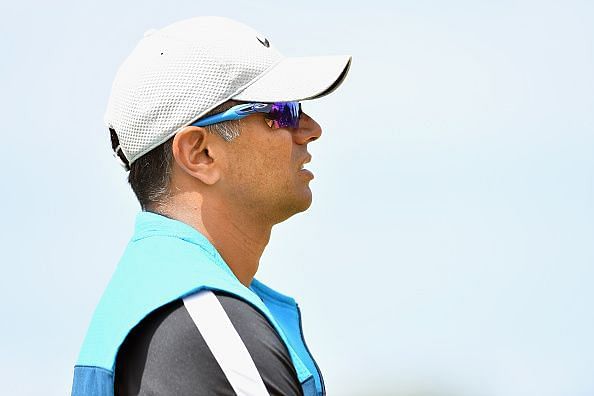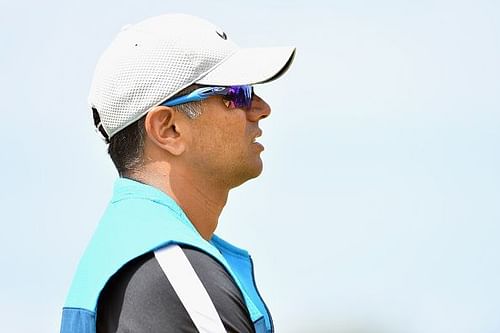
How India's feeder system is producing ready-made replacements for the senior team

There is excitement in the air as far as Indian Cricket is concerned, following the team's crushing win in the Trent Bridge Test against England earlier this week. The manner of victory was so commanding that it has prompted pundits to call for a sensational come-from-behind series win for the visitors, who after faltering miserably at Lord's, put in an excellent all-around show at Nottingham.
Even as the senior setup continue to show improvements in England, back home there is a progress of a different kind happening.
When Rahul Dravid was appointed as the India 'A' and Under-19 coach in June 2015, the one phrase which floated around the cricketing circles was 'With his appointment, Indian cricket's future is now in safe hands'.
Those who did spread this message weren't wrong. Dravid was an epitome of discipline and commitment during his playing days and was likely to bring those attributes while training the next generation.
But what was expected of him was concurrent planning and execution of those plans. To build a system where the potential future stars of Indian cricket got ample chances to show what they were made of and through that, try and create ready-made replacements for the senior side. Three years on, one can safely say that the execution of those ideas has come about splendidly.
An average Indian cricket fan would say that at present, there is only one Indian cricket team playing. An avid one would stop him/her and remind him/her that five others are too, back home.
In Bengaluru, India 'A' and India 'B' are involved in a quadrangular series while in Dindigul, three others- India Green, India Blue and India Red- are battling it out for the Duleep Trophy.'
14 players form each of the two India 'A' and B' squads, while 15 form each of the teams competing in the Duleep Trophy. That makes it 73 players participating in two tournaments in different cities.
The number is indicative of two things:
1. That Indian cricket is possibly going through it's the best phase, in terms of depth;
2. There is enormous care being taken to ensure that no deserving performer is deprived of opportunities to remain match fit and show to the selectors of what he is made of.
Abhinav Bindra, India's lone individual Olympic Gold medallist, often speaks about creating good systems to fetch the best results for the country. If he was to be told what was going on in Indian cricket right now, he would hope there were 10 other Dravids to create similar systems for other sports, for other athletes to train and get better at their trait.
While these players are getting the opportunity, there is one more aspect which is pleasing and Dravid alluded to it the other day in one of his press conferences:
"We are trying to create conditions with grass on the wickets so that it is a bit more challenging for the batsmen, gives our seamers lot more of a play in the game, Using it as an opportunity to develop our players. We see this as a platform to develop them for international cricket, for overseas cricket," he said.
There have been a few examples in the past of Indian batsmen, who have tended to do well on pitches with little assistance for the bowlers and when they have faced up to high-quality bowlers on pitches with juice in them, they have struggled to deliver the goods.
In India, there has been this ever-lasting debate of what is a 'sporting wicket'. Is it one on which the batsmen make merry? Or in which the bowlers have a ball? On a lot of occasions, curators have got confused and dished out the latter to make the contest uneven.
What Dravid spoke about in the interaction and described were or are not absolute green tops, but pitches which have something in it for the bowlers and ones where batsmen had to exhibit more than one type of skill.
The recently-concluded India A-South Africa A series is evidence of that. While bowlers like Mohammad Siraj had a field outing, even the batsmen, the likes of Prithvi Shaw, Mayank Agarwal from India 'A' and Rudi Second from South Africa 'A' got runs on the same pitches.
In a sense, the presence of such a system results in the creation of players who take lesser time to adjust to conditions overseas or at home and so the depth to choose from only widens for the selectors for different positions in the side.
It would not be wrong to say that supporters in India are least proud about the shenanigans inside the BCCI right now, but the same supporters would agree that three years after they first spoke about it, the future indeed is in safe hands, at the moment.